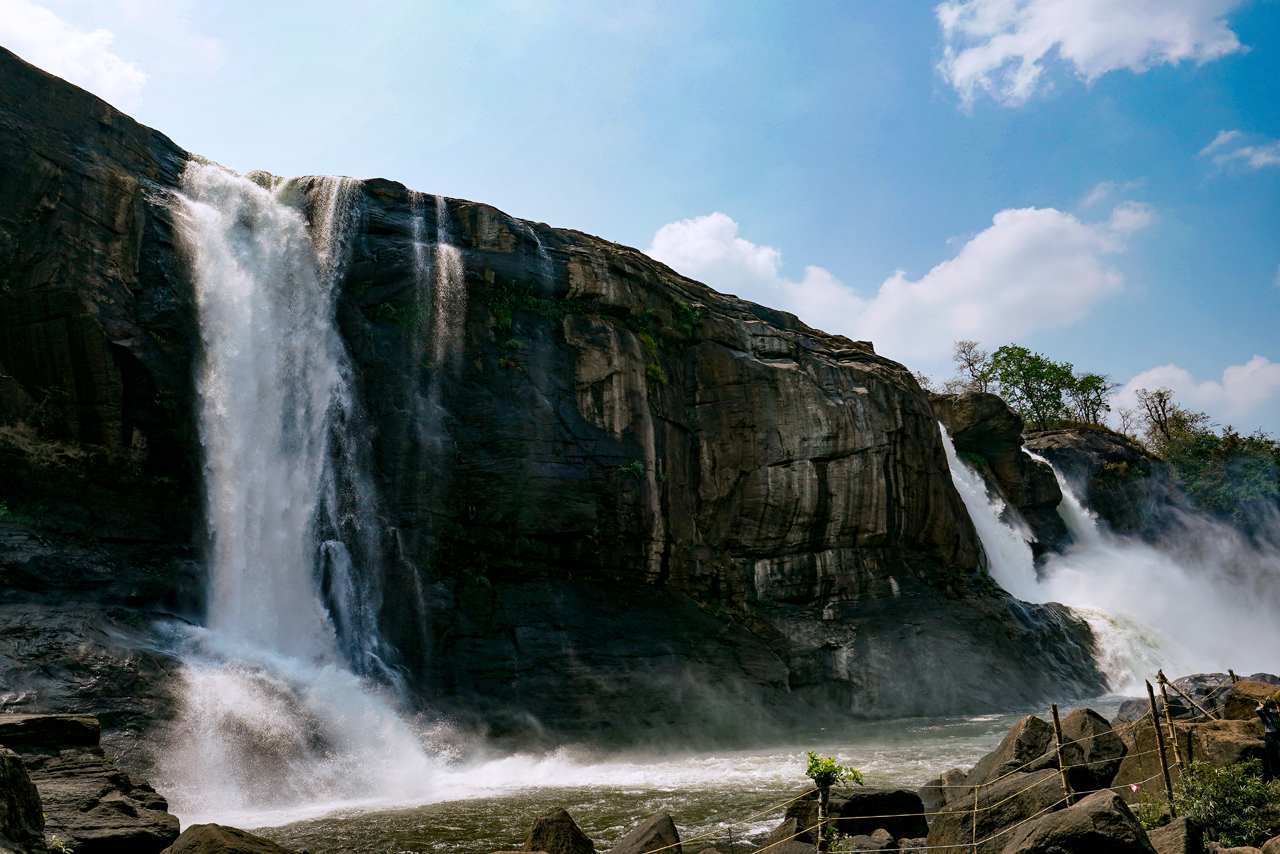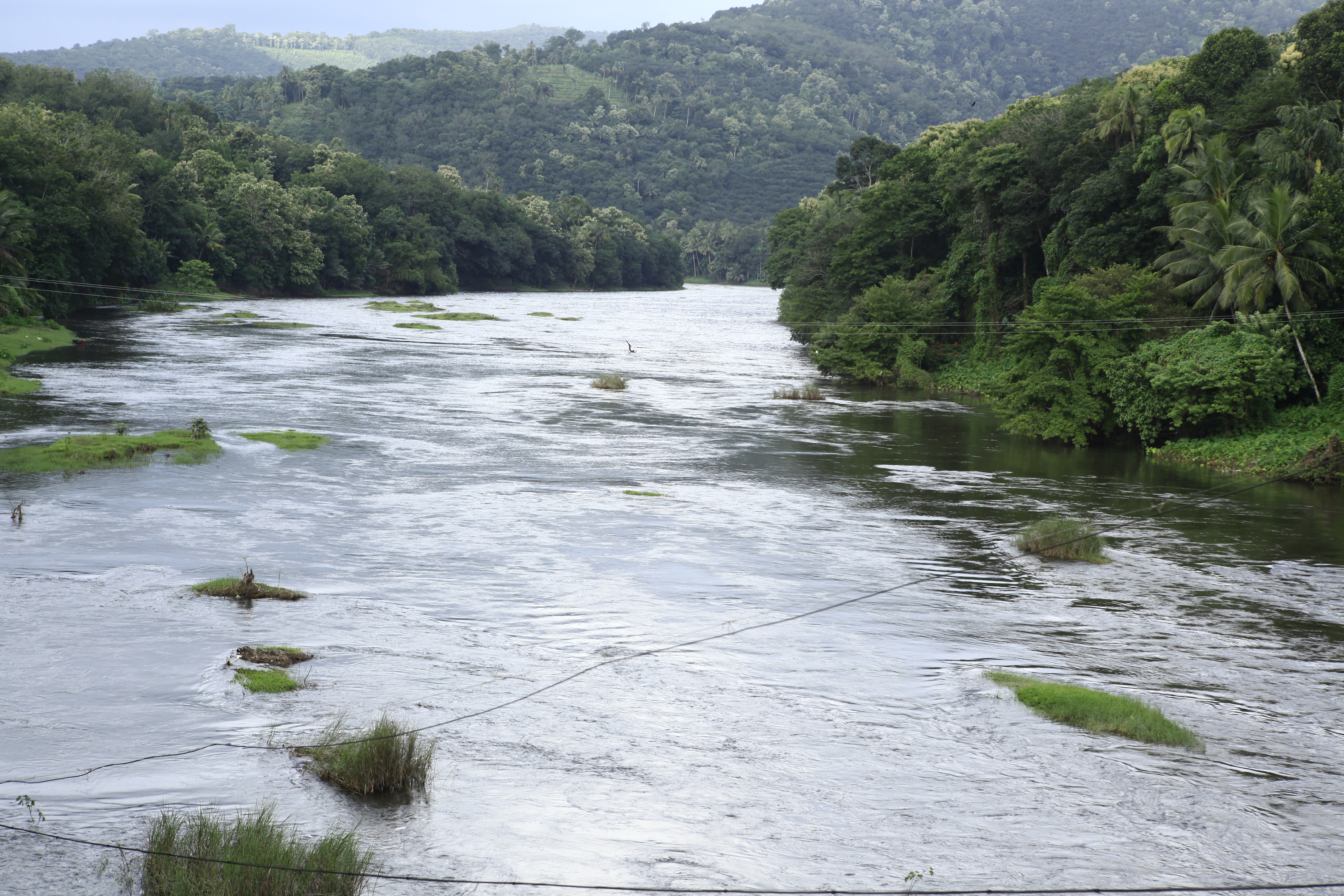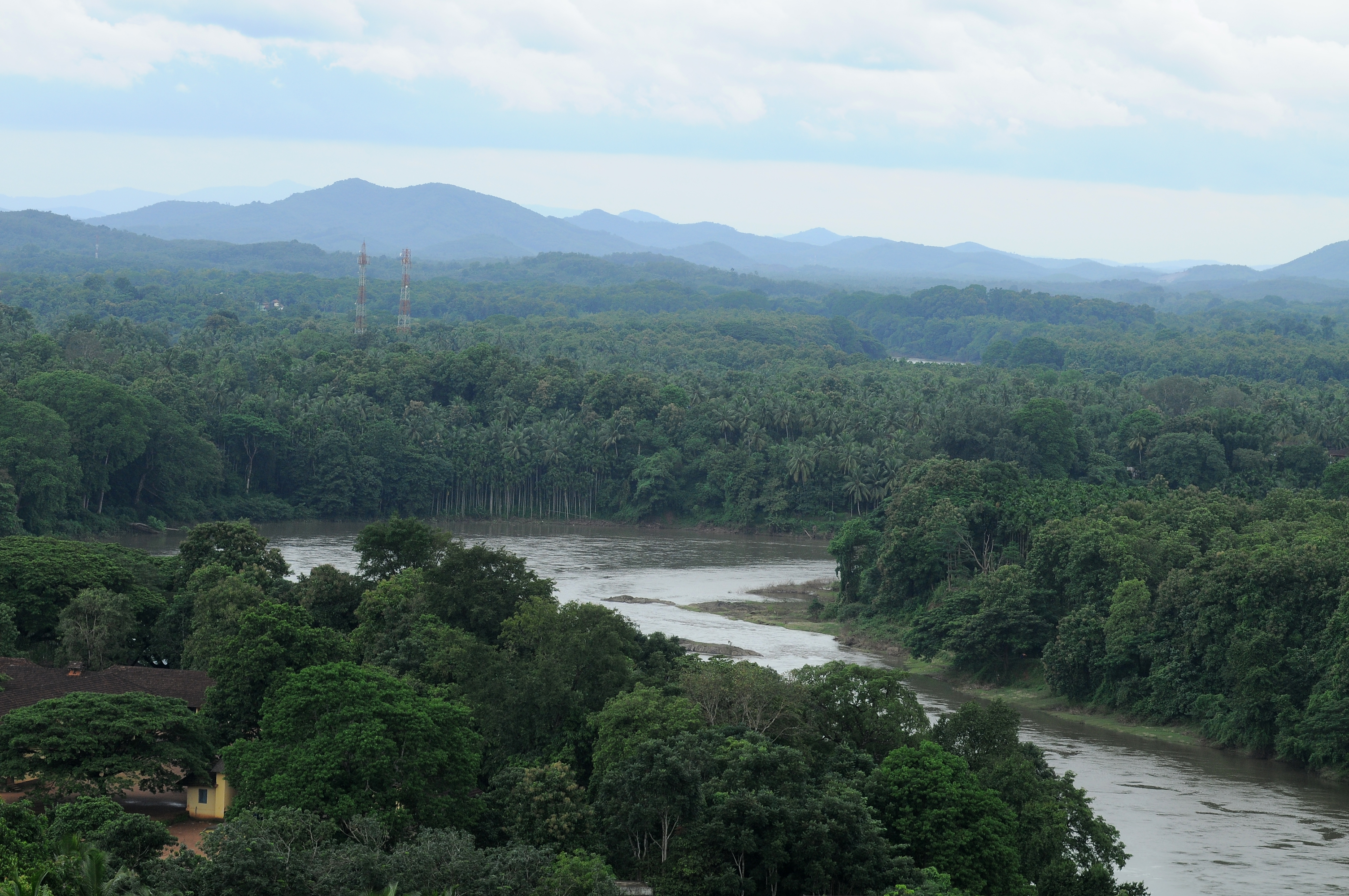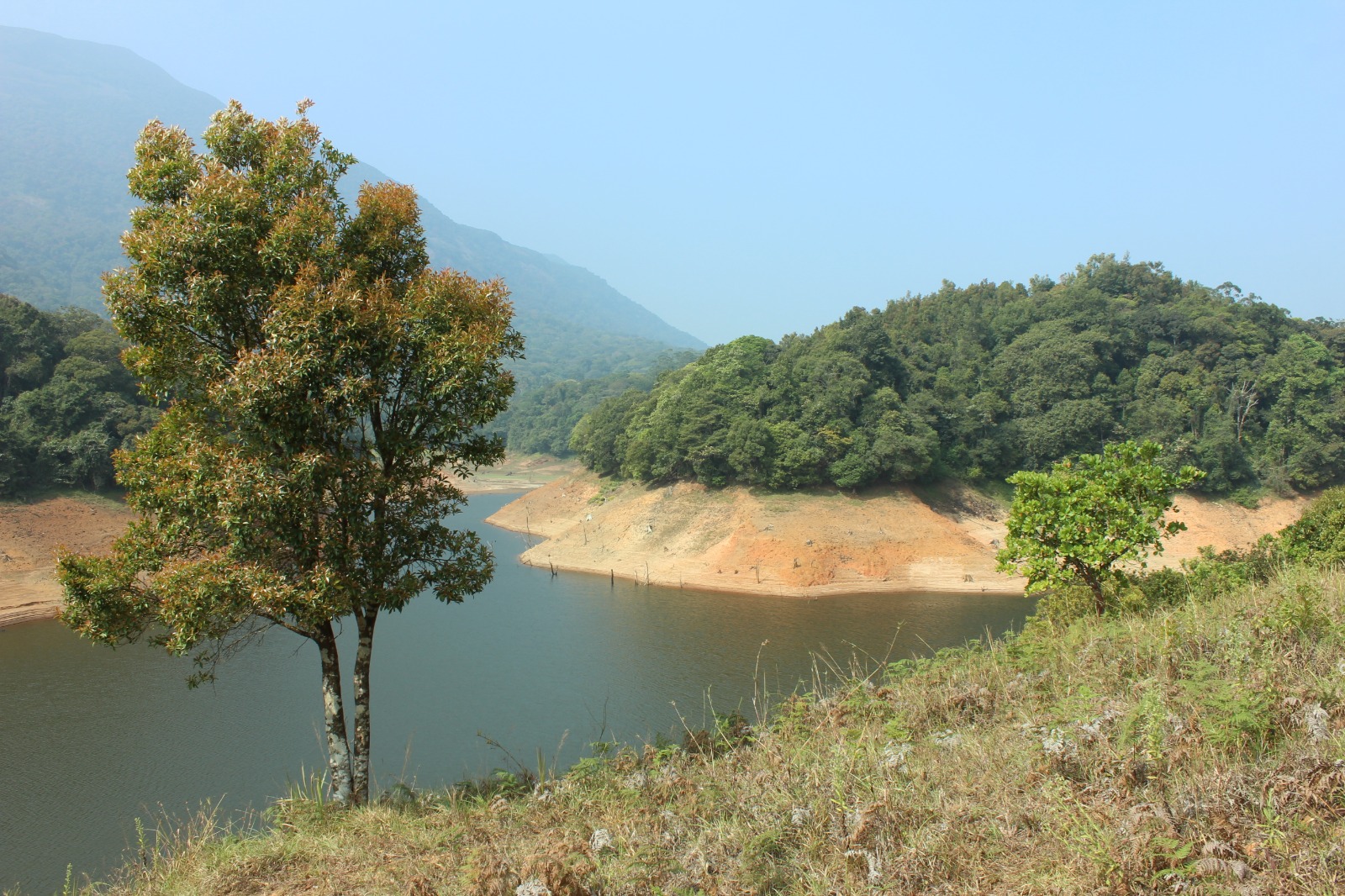Water Falls and Rivers
Discovering Kerala's Waterfalls: A Traveler's Paradise
Imagine stepping into a world where the air is fresh, the sounds are of rushing water and chirping birds, and your eyes feast upon breathtaking natural beauty. That's what awaits you in Kerala, especially when you embark on a journey to its magnificent waterfalls. For travelers seeking respite from the everyday hustle, a chance to reconnect with nature, and capture stunning memories, Kerala's cascading wonders offer an unparalleled experience.
Whether you're an adventure seeker looking for a trek to a hidden fall, a family wanting a refreshing day out, or a photography enthusiast aiming to capture nature's artistry, Kerala's diverse waterfalls cater to every kind of traveler. Prepare to be enchanted by the sheer variety, from easily accessible majestic plunges to secluded, multi-tiered cascades nestled deep within emerald forests.
Making the Most of Your Waterfall Adventure: Practical Tips for Travelers
Planning a trip to Kerala's waterfalls involves considering a few key aspects to ensure a smooth and enjoyable experience. The monsoon season (June to September) typically sees the waterfalls at their most voluminous and dramatic, but it's also important to be aware of potential safety concerns due to increased water flow and slippery conditions. The post-monsoon and winter months (October to February) offer pleasant weather and equally stunning views with safer conditions for exploration.
Accessibility varies greatly between waterfalls. Some, like Athirappilly and Vazhachal, have well-developed tourist infrastructure with designated viewing points and safe pathways. Others, like Soochipara and Meenmutty in Wayanad, might require a degree of trekking. It's advisable to research the accessibility and any entry fees or timings beforehand. Comfortable footwear, appropriate clothing, and carrying essentials like water and insect repellent are highly recommended. Respecting the local environment and adhering to any guidelines provided by authorities will ensure the preservation of these natural treasures for future travelers.
More Than Just a Sight: Engaging with Kerala's Waterfall Culture and Nature
Visiting Kerala's waterfalls is not just about witnessing their visual splendor; it's an opportunity to immerse yourself in the surrounding nature and local culture. Many waterfall sites are located near tribal settlements, offering a glimpse into their unique way of life and traditional knowledge of the forests. Engaging with local communities and supporting eco-friendly tourism initiatives can enrich your travel experience and contribute to the sustainable preservation of these natural wonders.
The journey to the waterfalls often involves traversing through lush landscapes, spice plantations, and verdant hills, providing ample opportunities for birdwatching and nature photography. The cool, misty air near the falls can be incredibly refreshing, offering a welcome break from the tropical heat. Take your time to soak in the atmosphere, listen to the symphony of nature, and create lasting memories in this captivating realm of cascading waters.
Top Picks for Your Kerala Waterfall Itinerary
For travelers eager to experience the best of Kerala's waterfalls, here are a few must-visit destinations that offer a blend of accessibility, stunning beauty, and unique experiences:

Athirappilly Falls: The Grand Spectacle You Can't Miss
As the "Niagara of India," Athirappilly is a spectacle that will leave you in awe. Its sheer size and the thunderous roar of the water are truly captivating. Well-maintained pathways and viewpoints offer safe and excellent perspectives of the falls. The nearby Charpa Falls and the drive through the scenic forest add to the overall experience, making it a perfect day trip for families and nature lovers.

Vazhachal Falls: Tranquility by the Cascades
Just a short drive from Athirappilly, Vazhachal offers a more serene experience. The wide, gentle cascade is perfect for leisurely viewing and photography. The surrounding forests are rich in biodiversity, and guided nature walks are a great way to explore the area. Its accessibility makes it suitable for travelers of all ages and fitness levels looking for a peaceful retreat.
Top Picks for Your Kerala Waterfall Itinerary (Part 2)
Continuing our exploration of Kerala's unmissable waterfalls, here are a few more gems that offer unique experiences for travelers:
Soochipara Falls (Sentinel Rock Falls), Wayanad: Adventure Amidst Nature
Nestled in the scenic district of Wayanad, Soochipara Falls is a three-tiered waterfall cascading down rocky cliffs. The journey to the falls involves a short trek through lush forests, adding an element of adventure to the experience. The pool at the bottom offers a refreshing dip for those willing to brave the cool waters. The panoramic views of the surrounding valleys from the viewpoint near the falls are simply breathtaking, making it a favorite among trekkers and nature enthusiasts.
Meenmutty Falls, Wayanad: A Multi-Tiered Delight
Also located in Wayanad, Meenmutty Falls is another stunning three-tiered cascade, though slightly more challenging to reach than Soochipara, requiring a longer trek. The effort is well rewarded by the pristine beauty of the falls and the untouched natural surroundings. The different tiers offer unique perspectives and photographic opportunities, making it a haven for those seeking a more secluded and adventurous waterfall experience.
Palaruvi Falls, Kollam: The Milky Stream
Situated in the Kollam district, Palaruvi, meaning "milky stream," is known for its horsetail-shaped cascade that plunges from a significant height. The surrounding forests are part of the Shendurney Wildlife Sanctuary, adding to the natural appeal of the area. Bathing under the falls is a popular activity, believed to have medicinal properties. The serene atmosphere and the picturesque setting make Palaruvi a refreshing stop for travelers exploring South Kerala.
Treading Lightly: Practicing Responsible Tourism at Kerala's Waterfalls
As travelers, it's our collective responsibility to ensure the preservation of these natural wonders for generations to come. When visiting Kerala's waterfalls, it's crucial to adhere to responsible tourism practices. Avoid littering and carry back all waste. Respect the local flora and fauna, and refrain from disturbing wildlife. Stick to designated pathways and avoid venturing into restricted areas for your safety and the protection of the ecosystem.
Support local communities and businesses that prioritize sustainable practices. Be mindful of water usage and avoid polluting the water bodies. By being conscious and respectful travelers, we can contribute to the long-term well-being of these precious natural sites and ensure that their beauty can be enjoyed by all.
The Enduring Allure: Why Kerala's Waterfalls Captivate Every Traveler
The waterfalls of Kerala are more than just scenic spots; they are vibrant ecosystems, sources of natural beauty, and integral parts of the state's identity. From the majestic roar of Athirappilly to the tranquil descent of Palaruvi, each waterfall offers a unique and unforgettable experience for travelers. Exploring these cascading jewels provides a profound connection with nature, a chance to witness the raw power and serene beauty of the natural world.
As you plan your journey through "God's Own Country," be sure to include these magnificent waterfalls in your itinerary. Allow yourself to be mesmerized by their beauty, rejuvenated by their refreshing spray, and inspired by the natural wonders they represent. The memories you create amidst these cascading jewels will undoubtedly become cherished highlights of your Kerala adventure, beckoning you to return and explore more of the magic this incredible land has to offer.
The Lifelines of Kerala: An Exploration of its Vital Rivers
Kerala, a land blessed with abundant rainfall and a network of interconnected water bodies, owes much of its prosperity and natural beauty to its numerous rivers. These are not merely geographical features; they are the very lifelines of the state, shaping its landscape, sustaining its agriculture, supporting its biodiversity, and deeply influencing its culture and traditions. From the majestic Periyar, the longest river, to the smaller yet equally significant streams that crisscross the terrain, Kerala's rivers are integral to its identity as "God's Own Country."
These rivers originate primarily in the high ranges of the Western Ghats, flowing westward through diverse landscapes – from misty mountains and dense forests to fertile plains and eventually emptying into the Arabian Sea or the backwaters. Each river has its own unique characteristics, its own story etched in the valleys it carves and the communities it nourishes. Exploring the rivers of Kerala is akin to understanding the very pulse of the state.
Mapping the Flow: Geographical Distribution and Classification of Kerala's Rivers
Kerala boasts a remarkable density of rivers, with approximately 44 major rivers and numerous smaller streams and tributaries. Geographically, these rivers can be broadly classified based on their origin and direction of flow. The majority of the larger rivers originate in the Western Ghats and flow westward into the Arabian Sea or the extensive backwater systems that parallel the coast. These west-flowing rivers are generally perennial due to the abundant rainfall received in the highlands.
A smaller number of rivers originate in the eastern slopes of the Western Ghats and flow eastward, eventually joining the larger river systems of neighboring Tamil Nadu. These east-flowing rivers, such as the Kabini, Bhavani, and Pambar, play a crucial role in the water resources of the eastern regions. Understanding this geographical distribution is key to appreciating the diverse hydrological landscape of Kerala and the varying roles these rivers play in different regions of the state.
The Mighty Flows: A Closer Look at Kerala's Principal River Systems
Several rivers stand out due to their length, discharge, and significance to the state's economy and ecology. The Periyar River, with its impressive length of about 244 kilometers, is the longest river in Kerala and a vital source of irrigation and drinking water. It also supports significant hydroelectric power generation and flows through the renowned Periyar National Park, contributing to its rich biodiversity.
Other major west-flowing rivers include the Bharathappuzha (the second longest), Pamba, Chaliyar, and Chalakudy. Each of these rivers has its own distinct characteristics and supports unique ecosystems and human settlements along their banks. The east-flowing rivers, though fewer in number and smaller in length within Kerala, are crucial for the agricultural and water needs of the regions they traverse before entering Tamil Nadu.
Rivers as Resources: Economic and Ecological Importance
Kerala's rivers are fundamental to the state's economy. They are the primary source of water for irrigation, supporting the agricultural sector, which is a significant contributor to the state's economy. Numerous dams and irrigation projects have been constructed across these rivers to harness their water for agriculture and domestic use. Furthermore, rivers play a crucial role in inland navigation and fishing, providing livelihoods for many communities.
Ecologically, the rivers and their associated ecosystems are vital for maintaining biodiversity. They support a wide array of aquatic life, including various species of fish, amphibians, and reptiles. The riparian vegetation along the riverbanks provides habitat for numerous terrestrial animals and birds. The health of these river ecosystems is crucial for the overall ecological balance of the state, and their preservation is of paramount importance in the face of increasing environmental pressures.
Flowing Through Culture: The Cultural Significance of Kerala's Rivers
Beyond their economic and ecological roles, Kerala's rivers hold deep cultural and historical significance. Many ancient settlements and temples are located along their banks, reflecting the historical importance of rivers as sources of water and transportation routes. Rivers are often featured in local folklore, songs, and religious rituals. The annual Nehru Trophy Boat Race on the Punnamada Lake, part of the Vembanad backwater system fed by several rivers, is a vibrant cultural spectacle that showcases the deep connection between the people of Kerala and their water bodies.
The rituals and festivals associated with rivers highlight the reverence with which they are regarded. The act of bathing in rivers is considered sacred in many traditions, and the waters are believed to possess purifying qualities. The rivers of Kerala are not just natural resources; they are woven into the very fabric of the state's cultural identity, embodying its history, traditions, and the close relationship between its people and nature.
Navigating the Currents: Challenges and Conservation of Kerala's Rivers
Like rivers across the globe, Kerala's rivers face numerous challenges in the modern era. Pollution from industrial and agricultural runoff, encroachment on riverbanks, sand mining, and the impacts of climate change pose significant threats to their health and sustainability. The increasing demand for water for various purposes also puts pressure on these vital resources.
Recognizing the importance of these rivers, various conservation efforts are underway. Government agencies, NGOs, and local communities are working towards river rejuvenation, pollution control, and sustainable water management practices. Afforestation along riverbanks, public awareness campaigns, and the implementation of stricter environmental regulations are crucial steps in ensuring the long-term health and vitality of Kerala's rivers. Protecting these lifelines is essential for the ecological security and the future prosperity of the state.
A Traveler's Guide: Experiencing the Rivers of Kerala
For travelers, Kerala's rivers offer unique opportunities for exploration and immersion in the state's natural beauty and cultural heritage. Backwater cruises along the Vembanad Lake and its connecting canals provide a serene perspective of life along the waterways. Houseboat stays offer a tranquil experience, allowing you to witness the daily rhythms of the communities that live by the rivers.
Kayaking and canoeing in the calmer stretches of rivers and backwaters offer a more active way to explore the waterways and their surrounding landscapes. Visiting riverside temples and historical sites provides a glimpse into the cultural significance of these rivers. Birdwatching along the riverbanks can be a rewarding experience for nature enthusiasts. Responsible tourism initiatives are also emerging, allowing travelers to engage with local communities and learn about their traditional ways of life connected to the rivers. Exploring Kerala's rivers is an enriching journey that goes beyond scenic beauty, offering insights into the state's history, culture, and the vital role these waterways play in the lives of its people.
Key Waterways: Exploring Some of Kerala's Most Important Rivers
Kerala's intricate network of rivers includes several prominent waterways that have significantly shaped the state's history, economy, and culture. Let's delve deeper into some of these crucial rivers:
The Periyar River: The Longest and Most Influential
As Kerala's longest river, the Periyar holds immense significance. Originating from the Sivagiri hills of the Western Ghats, it flows for approximately 244 kilometers before emptying into the Vembanad Lake and eventually the Arabian Sea. The Periyar basin is one of the most fertile regions in Kerala, supporting extensive agriculture. The Idukki Dam, built across the Periyar, is a major source of hydroelectric power for the state. The river also flows through the Periyar National Park, a biodiversity hotspot renowned for its wildlife. For travelers, a boat safari on the Periyar within the national park offers a unique opportunity to witness wildlife in its natural habitat along the riverbanks.
The Bharathappuzha River: The Cultural Heartbeat
The Bharathappuzha, also known as the Nila, is the second-longest river in Kerala, flowing for around 209 kilometers. It holds a significant place in Kerala's cultural landscape, as it has nurtured numerous poets, writers, and artists along its banks. The river flows through Palakkad, Thrissur, and Malappuram districts, irrigating vast paddy fields. Several important temples and historical sites are situated along its course. Though facing environmental challenges in recent times, the Bharathappuzha remains an important symbol of Kerala's cultural heritage. Exploring the towns and villages along its banks offers a glimpse into the state's rich history and traditions.

The Pamba River: The Sacred Pathway to Sabarimala
The Pamba River, the third longest in Kerala with a length of about 176 kilometers, holds immense religious significance. It is considered sacred by devotees of Lord Ayyappan, as the Sabarimala temple, one of the most important pilgrimage centers in South India, is located on its banks. During the pilgrimage season, the Pamba River witnesses a massive influx of devotees who bathe in its holy waters. Beyond its religious importance, the Pamba also supports agriculture and the unique ecosystem of the Pathanamthitta and Alappuzha districts. Boat races on the Pamba during festivals are also a vibrant cultural attraction.
The Chalakudy River: A Biodiversity Hotspot
Originating in the Anamalai hills, the Chalakudy River is known for its rich biodiversity. It flows through Thrissur and Ernakulam districts and is home to a variety of endemic fish species and riparian flora. The river is also famous for the majestic Athirappilly and Vazhachal waterfalls, which are major tourist attractions. The Chalakudy River basin is ecologically sensitive, and conservation efforts are crucial to protect its unique biodiversity. Exploring the waterfalls and the surrounding forests along the Chalakudy offers a captivating experience for nature lovers.
Chaliyar River

The Chaliyar River, is one of the major rivers in Kerala, flowing gracefully through the districts of Malappuram and Kozhikode before emptying into the Arabian Sea at Beypore. Stretching over 169 kilometers, Chaliyar is unique for being one of the few perennial rivers in Kerala, thanks to its origin from the Nilgiri Hills in the Western Ghats. The river has played a vital role in shaping the cultural and economic fabric of the region, historically serving as a lifeline for the timber trade. Today, Chaliyar stands as a symbol of environmental resilience, with successful community-led campaigns restoring its health after years of industrial pollution. Surrounded by dense forests, villages, and historic trade centers, the river offers scenic beauty and is a quiet witness to the region’s evolving ecological and social landscapes.
Shiruvani River

The Shiruvani River, though smaller in size compared to other rivers in Kerala, holds immense ecological and cultural significance. Originating in the lush forests of the Western Ghats in Tamil Nadu, it flows westward into Kerala, where it joins the Bharathapuzha River—the second longest river in the state. The water of the Shiruvani is often praised for its exceptional purity and taste, considered among the best in the country, and it serves as the primary water source for the city of Coimbatore. The river’s path cuts through rich biodiversity zones and sacred groves, making it both a crucial ecological corridor and a source of spiritual reverence for local communities. In recent years, conservationists have raised concerns about deforestation and unchecked tourism in the river's catchment areas, emphasizing the need for sustainable practices to protect this natural treasure.
The Kabini River: An East-Flowing Lifeline
Unlike the majority of Kerala's major rivers, the Kabini flows eastward, originating in the Wayanad district. It eventually joins the Cauvery River in Karnataka. The Kabini basin in Wayanad is known for its scenic beauty and supports agriculture and wildlife. The Kabini reservoir is a significant water source and a haven for wildlife, attracting numerous migratory birds. Exploring the Wayanad region offers opportunities to witness the unique landscape and the importance of the Kabini River to this eastern part of Kerala.